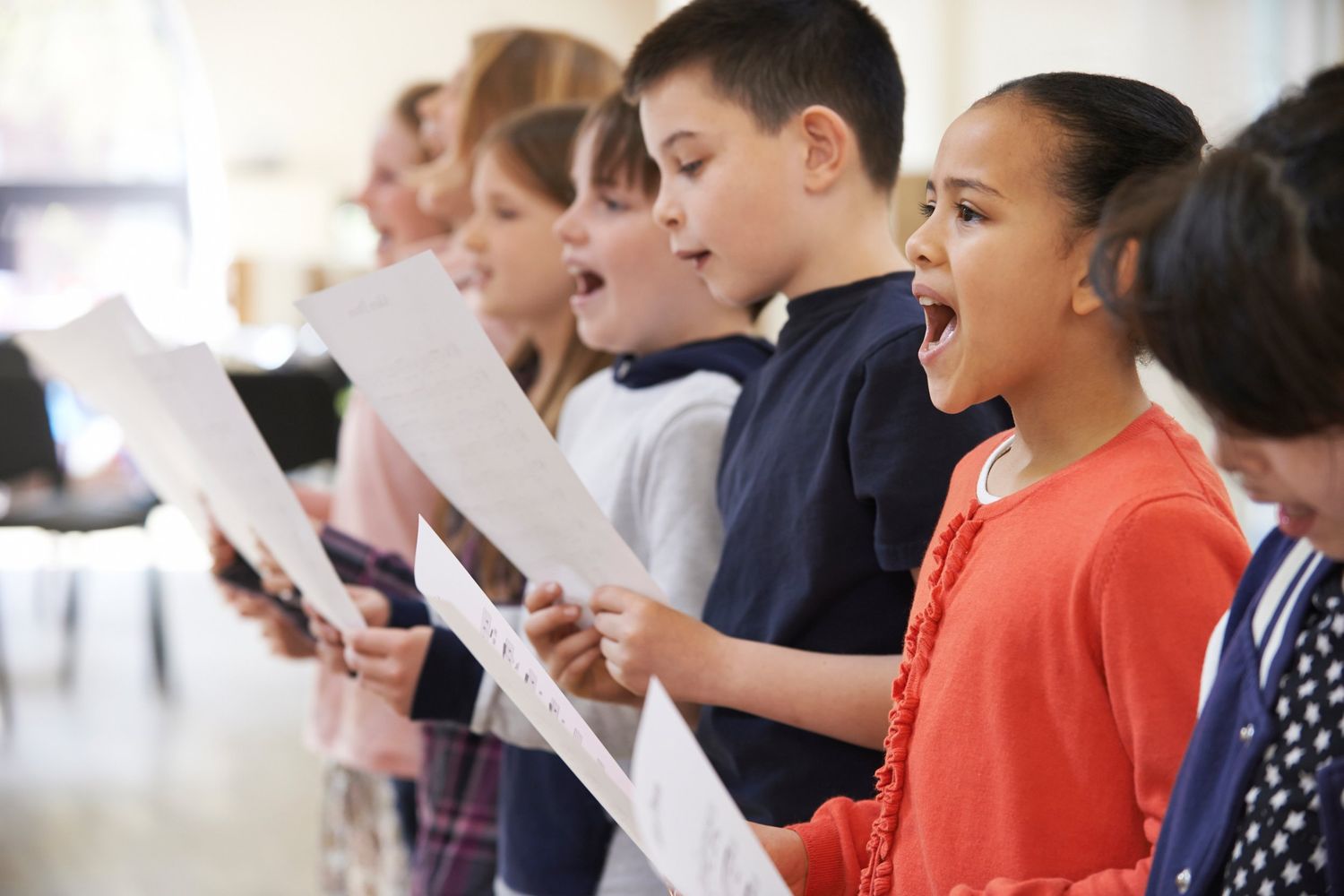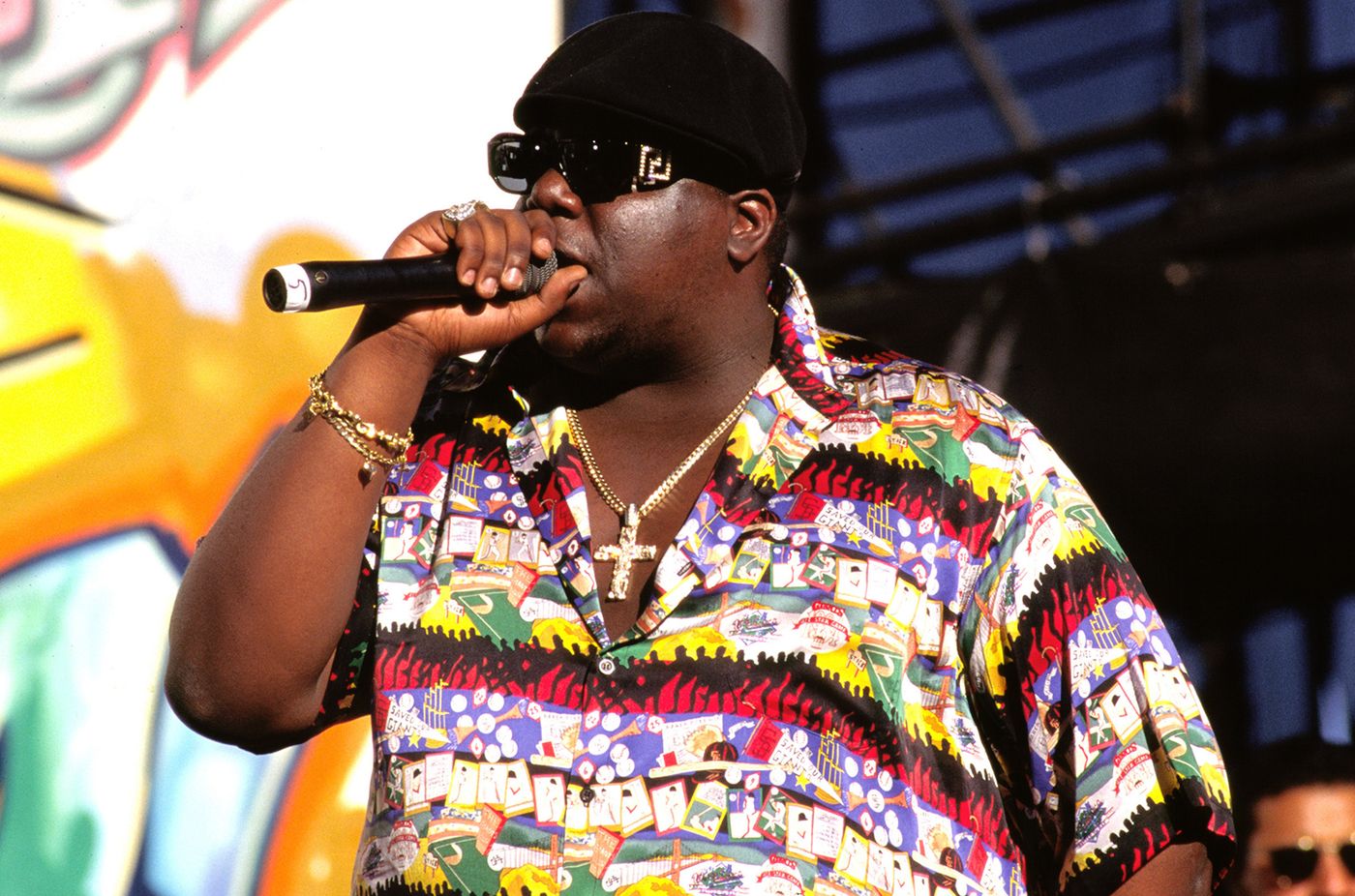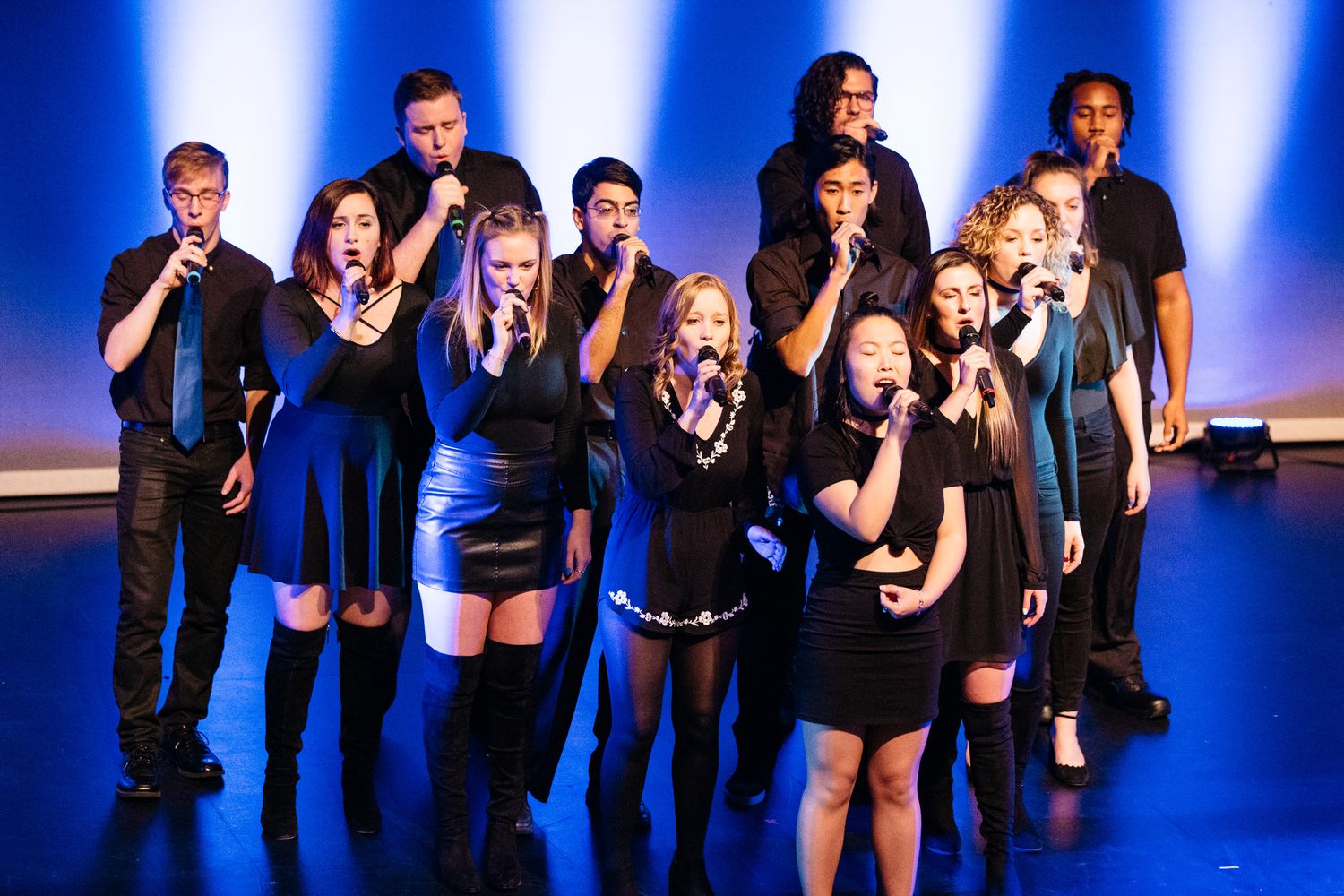Home>Events & Info>Acapella>What Is Acapella Songs


Acapella
What Is Acapella Songs
Modified: January 22, 2024
Explore the captivating world of acapella songs, where vocals take center stage without any instrumental accompaniment. Learn more about the mesmerizing harmonies and impressive techniques of acapella music.
(Many of the links in this article redirect to a specific reviewed product. Your purchase of these products through affiliate links helps to generate commission for AudioLover.com, at no extra cost. Learn more)
Table of Contents
Introduction
Acapella music is a unique and captivating genre that has been captivating audiences for centuries. Its intricate harmonies and rhythmical melodies, created solely by the human voice, have the power to inspire and touch hearts in a way that no other form of music can. Whether it’s a group of friends harmonizing on a street corner or a professional acapella group performing at a prestigious concert, the raw talent and skill required to create music without any instrumental accompaniment is truly remarkable.
In this article, we will delve into the fascinating world of acapella songs, exploring their history, techniques used in acapella singing, popular acapella songs and artists, as well as the benefits and challenges of acapella singing. Additionally, we will discover the role of acapella singing in different cultures and even take a glimpse into the vibrant world of acapella singing competitions.
So, whether you are an avid fan of acapella music or someone who is curious to learn more about this captivating art form, join us as we embark on a journey to unravel the beauty and magic of acapella songs.
Definition of Acapella Songs
Acapella songs, also known as vocal music or singing without instrumental accompaniment, are a form of music where all the sounds are created solely by the human voice. Derived from the Italian phrase “a cappella,” which means “in the style of the chapel,” acapella music has its origins in religious chanting and choral singing. However, over time, it has evolved to encompass various genres and styles.
What sets acapella songs apart is the absence of musical instruments. Instead, singers rely entirely on their vocal abilities to create melodies, harmonies, and percussive rhythms. Each voice contributes to the overall composition, with singers taking on different roles to emulate the sound of instruments such as the bass, guitar, drums, and even brass or string sections. This unique approach to music-making allows for a level of creativity and musicality that is both challenging and rewarding.
There are several subgenres and styles within acapella music, including doo-wop, barbershop quartet, choral arrangements, vocal jazz, and contemporary acapella. Each style brings its own flavor and techniques, showcasing the versatility and adaptability of the human voice as an instrument.
Whether performed by small ensembles or large choirs, acapella songs offer a remarkable listening experience. The absence of instrumental accompaniment puts the focus entirely on the voices, allowing for a pure, intimate, and emotionally charged performance. The intricate harmonies and precise vocal techniques required in acapella singing often create a captivating and mesmerizing effect that can transport listeners to a world of musical beauty.
Throughout history, acapella songs have been celebrated for their ability to convey deep emotions and tell powerful stories. From jubilant gospel choirs to haunting vocal arrangements, the power of the human voice in acapella music is truly remarkable. It is a testament to the endless creative possibilities that exist within the realm of vocal music.
History of Acapella Music
The origins of acapella music can be traced back to ancient times, where vocal music was an integral part of cultural and religious practices. Chanting and vocal harmonies were used in religious ceremonies, rituals, and even in storytelling. However, acapella music as we know it today has its roots in medieval Europe.
During the Middle Ages, acapella music played a vital role in the development of Western classical music. Sacred vocal music, such as Gregorian chants, dominated the musical landscape, and the human voice was considered the purest instrument to convey devotion and spirituality. Choral compositions were performed in monastic settings, with monks and nuns singing in unison or multi-part harmonies, creating a rich and ethereal sound.
In the Renaissance era, acapella music flourished as composers began to explore more complex vocal compositions. Polyphonic choral music, featuring multiple independent vocal lines, became popular. Composers like Josquin des Prez and Giovanni Pierluigi da Palestrina created elaborate choral works that showcased the intricate harmonies and counterpoint achievable with the human voice alone.
As music continued to evolve, acapella singing found its place in secular music as well. During the 19th century, close harmony singing emerged, giving birth to popular genres like barbershop quartet and doo-wop. These forms of acapella music showcased tight vocal harmonies and precise vocal techniques, delighting audiences with their catchy melodies and spirited performances.
In the 20th century, the rise of recording technology and radio broadcasting brought acapella music to a wider audience. Artists like The Mills Brothers and The Ink Spots popularized the doo-wop style, harmonizing their voices to create infectious, toe-tapping hits. The sound of acapella music also became synonymous with street corner performances and the emergence of vocal groups like The Persuasions and The Manhattan Transfer.
In recent years, contemporary acapella has seen a surge in popularity, thanks in part to mainstream media exposure through shows like “The Sing-Off” and the movie “Pitch Perfect.” A new generation of acapella groups, such as Pentatonix and Straight No Chaser, have garnered worldwide recognition for their innovative arrangements and exceptional vocal prowess.
Today, acapella music continues to thrive, with a diverse range of styles and influences. From classical choral compositions to modern pop arrangements, the power of the human voice in acapella music remains a timeless and captivating art form that has stood the test of time.
Techniques Used in Acapella Singing
Acapella singing requires a unique set of techniques to create the rich and harmonious sound that defines this genre. Without the support of musical instruments, singers must rely on their vocal abilities and mastery of various techniques to create a full and captivating performance. Here are some key techniques used in acapella singing:
- Harmony: Acapella singing relies heavily on harmonies, which are created when different voices sing different notes that complement each other. Singers must have a keen ear for pitch and be able to blend their voices harmoniously with others in the group. This requires precision, control, and the ability to listen and adjust accordingly.
- Vocal Range: A wide vocal range is essential in acapella singing, as it allows singers to cover different parts of an arrangement. Bass singers provide solid low notes, while tenors hit higher registers. All vocal ranges contribute to the overall fullness and complexity of the performance.
- Beatboxing and Vocal Percussion: In acapella music, beatboxing and vocal percussion add rhythmic elements to the performance. Beatboxers create drum-like sounds using their voice and mouth, providing an instrumental layer to the arrangement. This technique adds energy and a sense of groove to the music.
- Blend and Balance: Achieving a seamless blend and balanced sound among the voices is crucial in acapella singing. Singers must work together to create a unified sound, ensuring that no particular voice overpowers or gets lost within the group. This requires careful attention to dynamics, intonation, and vocal control.
- Vocal Effects: Acapella singing allows for the use of vocal effects to enhance the performance. Techniques such as crescendos, decrescendos, vibrato, falsetto, and vocal runs can add texture and emotion to the music, creating a dynamic and compelling performance.
- Improvization: In some cases, acapella singers may engage in improvised sections, showcasing their individual creativity and spontaneity. These improvised moments add a personal touch to the performance and demonstrate the versatility of the human voice.
- Breathing Techniques: Proper breathing techniques are essential in acapella singing to maintain control, support the voice, and sustain long notes. Singers must learn to breathe deeply from the diaphragm, allowing for sufficient airflow and vocal power.
Mastering these techniques requires practice, training, and a deep understanding of vocal craftsmanship. Acapella singers must not only possess exceptional individual vocal skills but also work together cohesively to create a seamless and captivating performance that showcases the beauty and power of the human voice.
Popular Acapella Songs and Artists
Over the years, numerous acapella songs and artists have gained popularity, showcasing the immense talent and creativity within this genre. From iconic classics to modern favorites, here are some examples of popular acapella songs and the artists who have made them unforgettable:
- “Bohemian Rhapsody” – Pentatonix: Pentatonix, an American acapella group known for their stunning vocal arrangements, brought new life to this legendary Queen song. Their rendition captivated millions with their seamless harmonies and intricate vocal performances.
- “Don’t Worry, Be Happy” – Bobby McFerrin: Bobby McFerrin’s solo acapella hit is a testament to the power of the human voice. His ability to create multiple vocal layers, including bass lines and intricate melodies, showcased his vocal versatility and established this upbeat tune as an instant classic.
- “Take Me to Church” – Hozier (arranged by Black Voices): Black Voices, a renowned acapella group from the UK, created a breathtaking arrangement of Hozier’s hit song. Their powerful vocals and soulful delivery added a new dimension to the emotional depth of the original track.
- “Africa” – Straight No Chaser: Straight No Chaser’s unique arrangement of Toto’s “Africa” went viral, captivating audiences with their energetic performance and flawless harmonies. Their intricate vocal percussion and playful interpretation of the song made it an instant hit.
- “Hallelujah” – Pentatonix: Pentatonix’s rendition of Leonard Cohen’s “Hallelujah” is an exquisite example of acapella brilliance. Their hauntingly beautiful harmonies and vulnerable vocal performances captured the essence of the song, earning them critical acclaim and widespread recognition.
These are just a few examples of the incredible talent and artistry within the world of acapella music. Other notable acapella artists and groups include The Swingle Singers, Naturally 7, Rajaton, Home Free, and Vocal Point, among many others. Each artist brings their unique style and creativity, pushing the boundaries of what is possible with the human voice alone.
From awe-inspiring covers of popular songs to original compositions crafted solely with voices, acapella music continues to captivate audiences across the globe. The dedication and sheer talent of these artists have helped solidify acapella as a respected and celebrated genre in the music industry.
Benefits and Challenges of Acapella Singing
Acapella singing offers a wide range of benefits for both singers and listeners, but it also comes with its fair share of challenges. Let’s explore some of the advantages and obstacles faced in the world of acapella music:
Benefits:
- Creative Expression: Acapella singing allows for unparalleled creative expression. Singers have the freedom to explore intricate harmonies, experiment with vocal techniques, and create unique arrangements, resulting in a truly personalized musical experience.
- Connection: Acapella singing fosters a deep sense of connection among singers. The reliance on teamwork, coordination, and listening skills creates a tight-knit camaraderie that is incomparable. This bond enhances musical performances and builds lasting friendships.
- Sharpened Musicality: Acapella singing demands a high level of musicianship. Singers must develop their ear for harmony, learn to match pitches accurately, and refine their vocal control. This dedication to musicality translates into an overall improvement in singing skills.
- Vocal Technique: Acapella singing cultivates exceptional vocal technique. Singers must focus on breath control, intonation, dynamics, and blending their voices seamlessly. These techniques honed in acapella singing can be applied to other vocal genres as well, improving vocal versatility and overall performance.
- Portable Performance: An additional advantage of acapella singing is its versatility and portability. Without the need for instruments, acapella groups can perform in a variety of settings, from street corners to concert halls, making it a convenient and accessible form of musical expression.
Challenges:
- Harmony Balance: Achieving a well-balanced harmony is one of the main challenges in acapella singing. Singers must ensure that no single voice dominates the others and that each part is heard clearly. Balancing volume, tone, and dynamics requires meticulous attention to detail and constant adjustment.
- Complex Arrangements: The intricate nature of acapella arrangements poses a challenge. Singers must navigate challenging vocal lines, overlapping harmonies, and complex rhythms. It requires dedicated rehearsal time and a strong understanding of musical notation and vocal technique.
- Rhythmic Precision: In the absence of instruments, maintaining precise rhythm and tempo can be challenging in acapella singing. Synchronizing rhythmic patterns and vocal percussion requires careful listening, coordination, and a strong sense of timing among the singers.
- Intonation and Pitch: In acapella singing, maintaining accurate intonation and pitch is crucial. Singers must develop a keen ear for tuning and consistently hit the right notes. Emphasizing proper intonation and pitch correction techniques is vital to achieve a polished and professional sound.
- Individual Vocal Development: While acapella singing celebrates the collective sound, individual vocal development can sometimes be overlooked. Singers must balance their personal vocal growth with the group’s overall cohesion, ensuring they receive proper attention to their unique vocal needs.
Overcoming these challenges through practice, dedication, and a passion for acapella music can lead to tremendous personal and musical growth. The benefits derived from acapella singing far outweigh the obstacles, resulting in a rewarding and fulfilling musical journey.
Acapella Singing Competitions
Acapella singing competitions have gained significant popularity in recent years, providing a platform for talented vocalists and groups to showcase their skills, creativity, and passion for acapella music. These competitions serve as a magnificent avenue for artists to gain recognition, connect with fellow musicians, and push the boundaries of their musical abilities. Here’s a closer look at the world of acapella singing competitions:
The Sing-Off: One of the most well-known acapella singing competitions is “The Sing-Off.” This televised competition features a variety of vocal groups from different backgrounds and styles, battling it out for the title. From intricate harmonies to captivating performances, the show has given rise to some of the most successful contemporary acapella groups, such as Pentatonix.
International Championship of Collegiate A Cappella (ICCA) and International Championship of High School A Cappella (ICHSA): These competitions focus specifically on acapella groups from colleges and high schools. Groups from around the world compete at regional and national levels, showcasing their vocal talent, creativity, and stage presence. These competitions not only provide a platform for students to shine but also offer valuable networking opportunities and educational resources for aspiring singers.
Harmony Sweepstakes A Cappella Festival: Founded in 1988, the Harmony Sweepstakes A Cappella Festival is the longest-running acapella competition in the United States. Vocal groups of all styles and genres compete in regional events, culminating in a national final. This event celebrates the diversity and artistry within the acapella community, showcasing the highest caliber of talent and creativity.
SoJam: SoJam is an annual festival and competition dedicated to contemporary acapella music. Hosted by the Contemporary A Cappella Society (CASA), this event features workshops, performances, and a competition where groups from around the world showcase their vocal prowess. SoJam embraces innovation and pushes the boundaries of what acapella music can achieve.
These competitions not only provide a platform for acapella groups to gain exposure and recognition but also create a vibrant and supportive community for singers to connect with one another. They encourage growth, collaboration, and a constant drive for excellence in acapella music.
Participating in acapella singing competitions comes with its share of benefits. Apart from the thrill of competing, singers have the opportunity to learn from experienced judges, receive constructive feedback, and refine their skills. The exposure gained from these competitions can lead to professional opportunities, recording contracts, and increased visibility within the music industry.
Furthermore, acapella competitions serve as a platform to celebrate the artistry and versatility of vocal music. They highlight the potential of the human voice, inspiring singers to continue pushing boundaries and exploring new horizons within the world of acapella music.
Acapella Singing in Different Cultures
Acapella singing is not only embraced in Western music but also has a rich history and presence in various cultures around the world. From ancient chants to traditional vocal ensembles, acapella music has played a significant role in cultural traditions and expressions of identity. Let’s explore acapella singing in different cultures:
Gospel Acapella: In African-American churches, gospel acapella singing has a deep-rooted tradition. It is characterized by powerful harmonies, call-and-response forms, and soul-stirring vocal performances. Gospel acapella music serves as a means of spiritual expression, connecting communities through shared experiences of worship and celebration.
Maqam in Middle Eastern Music: The Maqam tradition in Middle Eastern music often features acapella singing. In this style, vocalists explore the intricate microtonal scales and melodies unique to each Maqam mode. Singers exhibit great technical skill, improvisation, and emotional depth, creating mesmerizing acapella performances.
Zulu Acapella: In South Africa, Zulu acapella singing is a vibrant and integral part of cultural celebrations. Known as Isicathamiya, this acapella style showcases intricate harmonies, rhythmical footwork, and distinctive vocal techniques. It emerged in the mining communities during the apartheid era and has since become globally recognized through groups like Ladysmith Black Mambazo.
New Zealand Maori Acapella: In Maori culture, waiata (songs) are often performed acapella. These songs showcase the rich oral traditions and ancestral stories of the Maori people. The use of harmonies, rhythmic elements, and vocal gestures known as actions enhances the storytelling and spiritual significance of the waiata.
Bulgarian Folk Singing: Bulgaria has a strong tradition of multipart acapella singing. Known as “Bulgarian throat singing” or “Bulgarian choral singing,” it features complex harmonies, overlapping vocal lines, and unique vocal techniques that produce distinct overtones. These mesmerizing acapella performances highlight the cultural pride and musical artistry of the Bulgarian people.
These examples represent just a fraction of the diverse acapella traditions found in cultures around the world. Acapella singing serves as a medium for cultural preservation, storytelling, and community bonding. It provides a means of expressing identity, emotions, and shared experiences, serving as a powerful testament to the universal language of music.
Acapella music, in its various cultural forms, continues to be cherished and celebrated, fostering a sense of pride and appreciation for the unique heritage and traditions of different cultures. Through acapella singing, these traditions are passed down from one generation to another, keeping the cultural fabric alive and vibrant.
Conclusion
Acapella singing captivates and mesmerizes audiences with its pure and unadulterated sound. This unique genre, where all sounds are created solely by the human voice, has a rich history and continues to thrive in various cultures around the world.
We have explored the definition of acapella songs, delved into the fascinating history of this genre, and examined the techniques used in acapella singing. We have also highlighted popular acapella songs and artists who have made a significant impact on the genre.
Acapella singing offers a range of benefits, including creative expression, connection, sharpened musicality, and the ability to perform without the need for instruments. However, it also comes with challenges such as harmony balance, complex arrangements, and maintaining precise intonation and rhythm.
Acapella singing competitions provide a platform for talented vocalists and groups to showcase their skills, gain recognition, and connect with fellow musicians. These competitions serve as a source of inspiration, growth, and camaraderie within the acapella community.
Furthermore, acapella singing transcends cultural boundaries, with different cultures embracing their unique acapella traditions. From gospel acapella in African-American churches to Maqam in Middle Eastern music, the universal language of acapella music connects people and preserves cultural heritage.
In conclusion, acapella singing is a remarkable art form that celebrates the beauty and power of the human voice. It offers a diverse range of styles, techniques, and cultural expressions that continue to captivate and inspire audiences worldwide. Whether performed on grand stages, in intimate settings, or as part of religious and cultural traditions, acapella music showcases the immense talent, creativity, and resilience of vocalists who breathe life into melodies and harmonies solely with their voices. So, let us continue to appreciate and celebrate the magic of acapella songs, preserving and expanding this captivating musical art form for generations to come.











